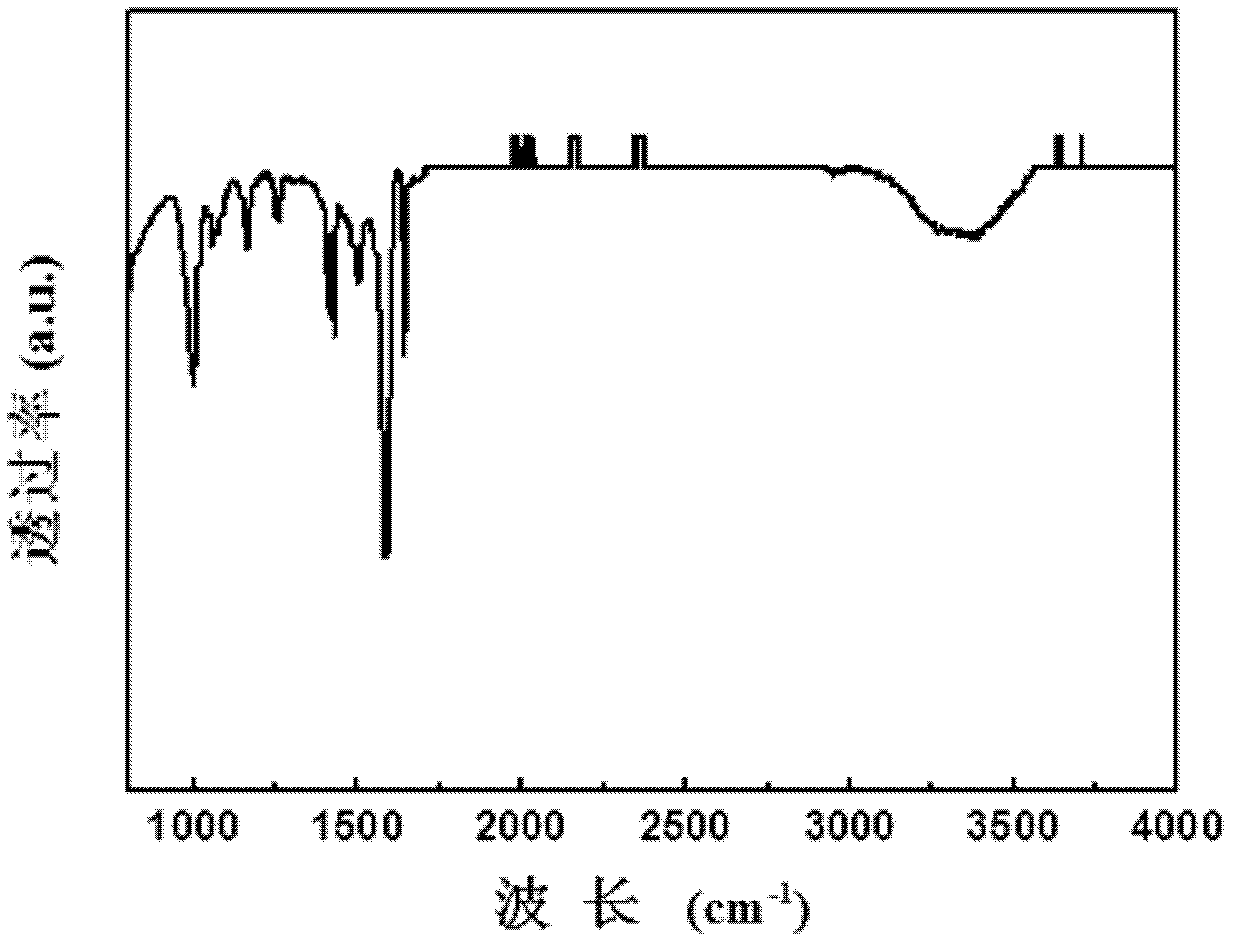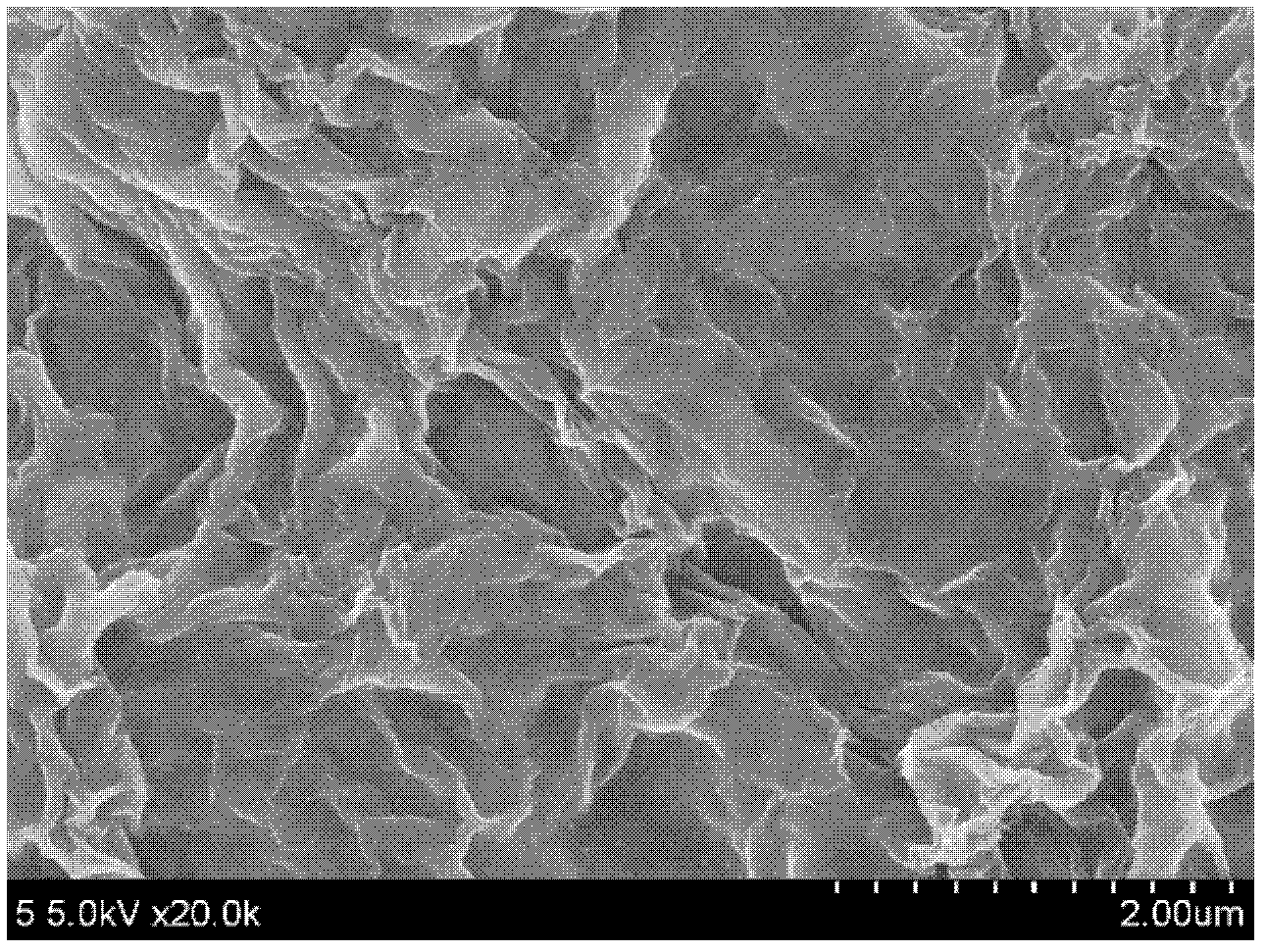Preparation method of biocompatible photo-thermal response self-healing conductive hydrogel
A conductive hydrogel, photothermal response technology, applied in the field of conductive hydrogel preparation, can solve problems such as the preparation of graphene-polymer self-healing hydrogels, and achieve good self-healing performance, reaction Mild conditions, high conductivity effect
- Summary
- Abstract
- Description
- Claims
- Application Information
AI Technical Summary
Problems solved by technology
Method used
Image
Examples
Embodiment 1
[0023] Dissolve 3.2g of N,N-dimethylacrylamide monomer, 0.032g of initiator potassium persulfate and 0.08g of accelerator N,N,N',N'-tetramethylethylenediamine into 30g of water to prepare a single body solution; 1mg / ml graphite oxide aqueous solution was hydrothermally reacted at 200°C for 8-12h to prepare graphene hydrogel; 3.6g graphene hydrogel prepared by hydrothermal method was soaked in monomer solution at 2°C The solution was replaced in 24 hours; the graphene hydrogel containing the monomer solution was left to stand, and the graphene-polydimethylacrylamide hydrogel was obtained after the polymerization reaction was initiated at room temperature for 48 hours.
[0024] figure 1 It is the Fourier transform infrared spectrum of the product, and the spectrum shows that the N,N-dimethylacrylamide monomer in the graphene hydrogel is successfully polymerized to form polydimethylacrylamide.
[0025] figure 2 It is a scanning electron microscope photo of the product, and it ...
Embodiment 2
[0029] Dissolve 5g of N,N-dimethylacrylamide monomer, 0.05g of initiator potassium persulfate and 0.125g of accelerator N,N,N',N'-tetramethylethylenediamine into 50g of water to prepare a monomer solution; 2mg / ml graphite oxide aqueous solution was hydrothermally reacted at 100°C for 8h to prepare graphene hydrogel; 4g of graphene hydrogel prepared by hydrothermal method was soaked in monomer solution for 18h at 4°C for solution Replacement: the graphene hydrogel containing the monomer solution was left to stand, and the graphene-polydimethylacrylamide hydrogel was obtained after initiating a polymerization reaction at room temperature for 60 hours.
[0030] N,N-dimethylacrylamide monomers in graphene hydrogels were successfully polymerized to form polydimethylacrylamide. The graphene-polydimethylacrylamide hydrogel uses a three-dimensional graphene network as a skeleton structure, and polymers are filled in the three-dimensional graphene network. The product has high electri...
Embodiment 3
[0032] Dissolve 7.2g of N,N-dimethylacrylamide monomer, 0.072g of initiator potassium persulfate and 0.18g of accelerator N,N,N',N'-tetramethylethylenediamine into 90g of water to prepare a single body solution; 1.5mg / ml graphite oxide aqueous solution was hydrothermally reacted at 150°C for 10h to prepare graphene hydrogel; 3.6g graphene hydrogel prepared by hydrothermal method was soaked in monomer solution at 5°C The solution was replaced for 12 hours; the graphene hydrogel containing the monomer solution was left to stand, and the polymerization reaction was initiated at room temperature for 72 hours to obtain a graphene-polydimethylacrylamide hydrogel.
[0033] N,N-dimethylacrylamide monomers in graphene hydrogels were successfully polymerized to form polydimethylacrylamide. The graphene-polydimethylacrylamide hydrogel uses a three-dimensional graphene network as a skeleton structure, and polymers are filled in the three-dimensional graphene network. The product has high...
PUM
| Property | Measurement | Unit |
|---|---|---|
| compressive strength | aaaaa | aaaaa |
| impedance | aaaaa | aaaaa |
Abstract
Description
Claims
Application Information
 Login to View More
Login to View More - R&D
- Intellectual Property
- Life Sciences
- Materials
- Tech Scout
- Unparalleled Data Quality
- Higher Quality Content
- 60% Fewer Hallucinations
Browse by: Latest US Patents, China's latest patents, Technical Efficacy Thesaurus, Application Domain, Technology Topic, Popular Technical Reports.
© 2025 PatSnap. All rights reserved.Legal|Privacy policy|Modern Slavery Act Transparency Statement|Sitemap|About US| Contact US: help@patsnap.com



